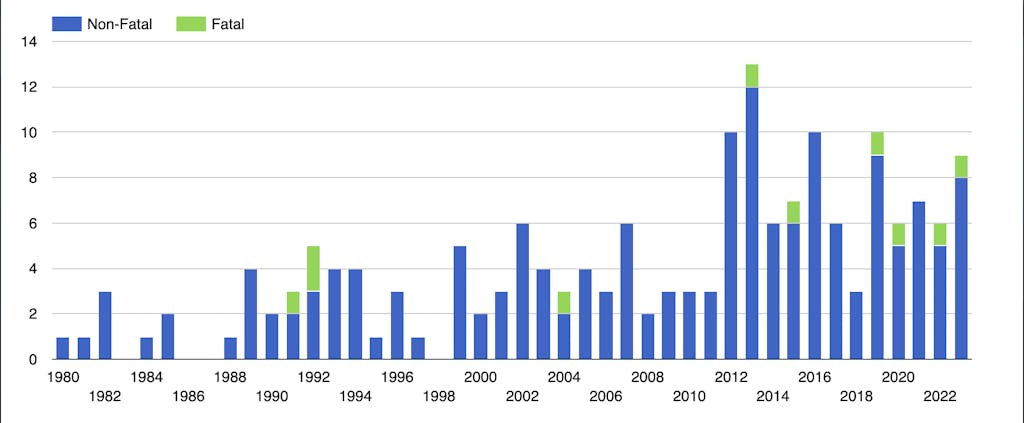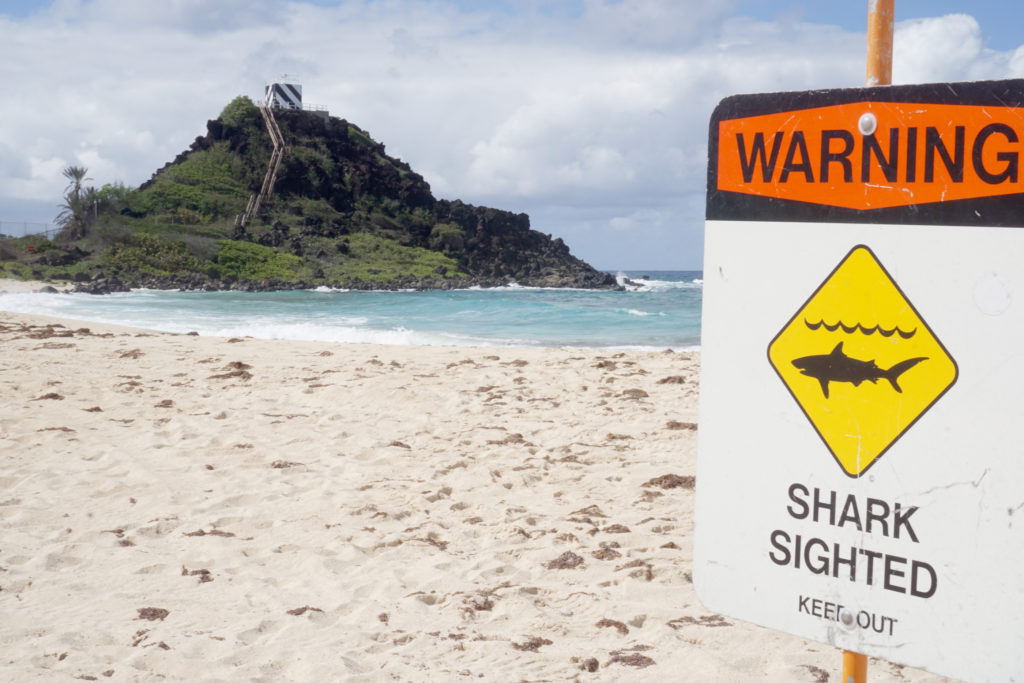According to Hawaiian oral tradition, Hawaii shark attacks were most common during the late summer and fall months, or, as they put it, “when the wiliwili tree blooms.”
Turns out, they weren’t too far off from what scientists are now finding out. A recent study shows that female tiger sharks migrate to the Hawaiian Islands during these months to give birth. The migration and pupping season go hand-in-hand with increased shark bites.
However, scientists do not want people to start drawing their own conclusions about the recent shark attacks off of Maui waters. There’s a lot that can affect shark attack statistics.
Of course, we all know that tiger sharks are present in Hawaiian waters all year long. It’s just the late summer and fall months that seem to see the most attacks. But with shark attacks seeming more frequent, I am starting to wonder how tourism will be affected. Prior to this, shark attacks seemed to be a Hollywood-type scare we’d only see in movies, like “Jaws.”
How Common are Shark Attacks in Hawaii?
Hawaii typically sees less than ten shark attacks per year, and zero or one fatality. There were nine attacks in 2023, with one unfortunately being fatal.
If you look back over the years, there were ten total fatalities from shark attacks in Hawaii between 1980 and 2023, with most of those occurring since 2012. The number of nonfatal attacks has also increased since 2012.

So, while shark attacks seem like a looming danger in Hawaii, there are bigger threats to our visitors and residents. Still, it’s important to stay safe in our waters to avoid shark encounters.
Almost all shark attacks in Hawaii are from Tiger Sharks. These large, aggressive creatures grow to be over 15 feet long and 2,000 pounds.
Avoiding Shark Attacks
Ready to enjoy Hawaii’s water while reducing your chances of a shark attack? Here are the top 11 ways to avoid a shark attack in Hawaii:
1. Always Swim with a Buddy.
Enter the water with other people, whether you’re swimming, surfing, snorkeling, or simply getting your feet wet. And, stay close to shore and to lifeguards. Book guided snorkel and diving trips with Hawaii Aloha Travel to ensure you’re going with professionals trained in safety.
2. Swim in Clear Water.
Swimming in murky waters can be dangerous because sharks have difficulty seeing. If a shark thinks you’re a dolphin or sea turtle, he may try to attack.
3. Swim During Full Daylight
Stay out of the water at dawn, dusk, and night. This is when many species of sharks may move closer to shore in search of food. But be aware that Hawaii tiger sharks are known to attack people at all times of the day.
4. Don’t Enter the Water With Open Wounds or Blood
Do not enter the water if you have open wounds or are bleeding in any way. Sharks can detect blood and body fluids in extremely small concentrations.
5. Avoid Common Hawaii Shark Hang-Out & Attack Areas
Avoid murky waters, harbor entrances, areas near stream mouths (especially after heavy rains), channels, or steep dropoffs. These types of waters are known to be frequented by sharks.
6. Avoid Flashy Accessories and High-Contrast Clothes
Do not wear high-contrast clothing or shiny jewelry. Hawaii sharks see contrast very well, which could provoke them to attack.
7. Keep Splashing to a Minimum
Refrain from excessive splashing; keep pets, which swim erratically, out of the water. Sharks are known to be attracted to such activity.
8. Take Shark Sightings Seriously to Avoid Attacks in Hawaii
Do not enter the water if sharks are known to be present, and leave the water quickly and calmly if one is sighted. Do not provoke or harass a shark, even a small one.

9. Observe Animal Behaviour
If fish or turtles start to behave erratically, leave the water. Be alert to the presence of dolphins, as they are prey for some large sharks.
10. Stay Away from Dead Fish
Remove speared fish from the water or tow them a safe distance behind you. Do not swim near people fishing or spearfishing. Stay away from dead animals in the water.
11. Swim Near Lifeguards
Swim or surf at beaches patrolled by lifeguards, and follow their advice.
Hawaii Shark Attacks: Awareness is Key
Even in high-incidence months like October, heeding these safety tips can reduce your risk of having an unwanted shark encounter. So, make sure you reduce your chances of a shark attack and enjoy the water any time of year!




